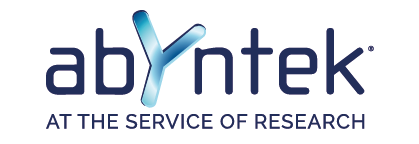The process of mass sequencing begins with the collection of biological samples, which could be anything from human tissue to environmental samples like soil or water. Here’s an overview of the steps involved in sample collection and preparation for mass sequencing:
1. Sample Collection:
The type of sample collected depends on the specific research or diagnostic objectives. For example, if the goal is to study human genetics, samples might include blood, saliva, tissue biopsies, or swabs from various bodily surfaces. If the goal is environmental analysis, samples could include soil, water, air, or microbial cultures.
There are specific kits for non-invasive sample collection, such as those from DNA Genotek, which allow the sample to be stored at room temperature for 5 years.
2. Preservation and Storage:
After collection, samples need to be properly preserved to maintain the integrity of the nucleic acids (DNA, RNA) within them. Preservation methods vary depending on the type of sample and the anticipated duration of storage. Common preservation methods include:
- Freezing at ultra-low temperatures (-80°C or lower).
- Storing in preservative solutions (e.g., RNA stabilization reagents).
- Drying samples on specialized filter papers.
3. Sample Processing:
Before nucleic acid extraction can occur, the collected samples may need to undergo various processing steps to isolate the target material. For example, blood samples might require the separation of plasma or serum from cellular components, tissue samples might require homogenization, and environmental samples might require filtration or concentration steps.
4. Nucleic Acid Extraction:
Once processed, nucleic acids (DNA, RNA) are extracted from the sample. Extraction methods vary depending on the type of sample and the downstream application. Common extraction techniques include phenol-chloroform extraction, silica membrane-based column purification, magnetic bead-based purification, and solid-phase extraction.
5. Quality Control:
After extraction, the quality and quantity of the extracted nucleic acids are assessed using various methods, such as spectrophotometry (e.g., UV absorbance) and fluorometry (e.g., fluorescence-based assays). This ensures that the extracted nucleic acids are suitable for downstream analysis and sequencing.
6. Library Preparation:
Following nucleic acid extraction and quality control, the DNA or RNA is fragmented into smaller pieces and sequencing adapters are ligated to the ends of the fragments. This step, known as library preparation, prepares the nucleic acids for sequencing and allows for the amplification of the fragments during the sequencing process.
7. Sequencing:
The prepared libraries are then loaded onto the sequencing platform, where they undergo sequencing according to the chosen technology (e.g., Illumina, Ion Torrent, PacBio, Oxford Nanopore). The sequencing platform generates data in the form of nucleotide sequences, which are then processed and analyzed bioinformatically
Overall, the process from sample collection to sequencing involves several critical steps to ensure the integrity and quality of the nucleic acids and the accuracy of the resulting sequencing data. Proper sample collection, preservation, processing, and extraction are essential for obtaining reliable sequencing results and meaningful biological insights.




